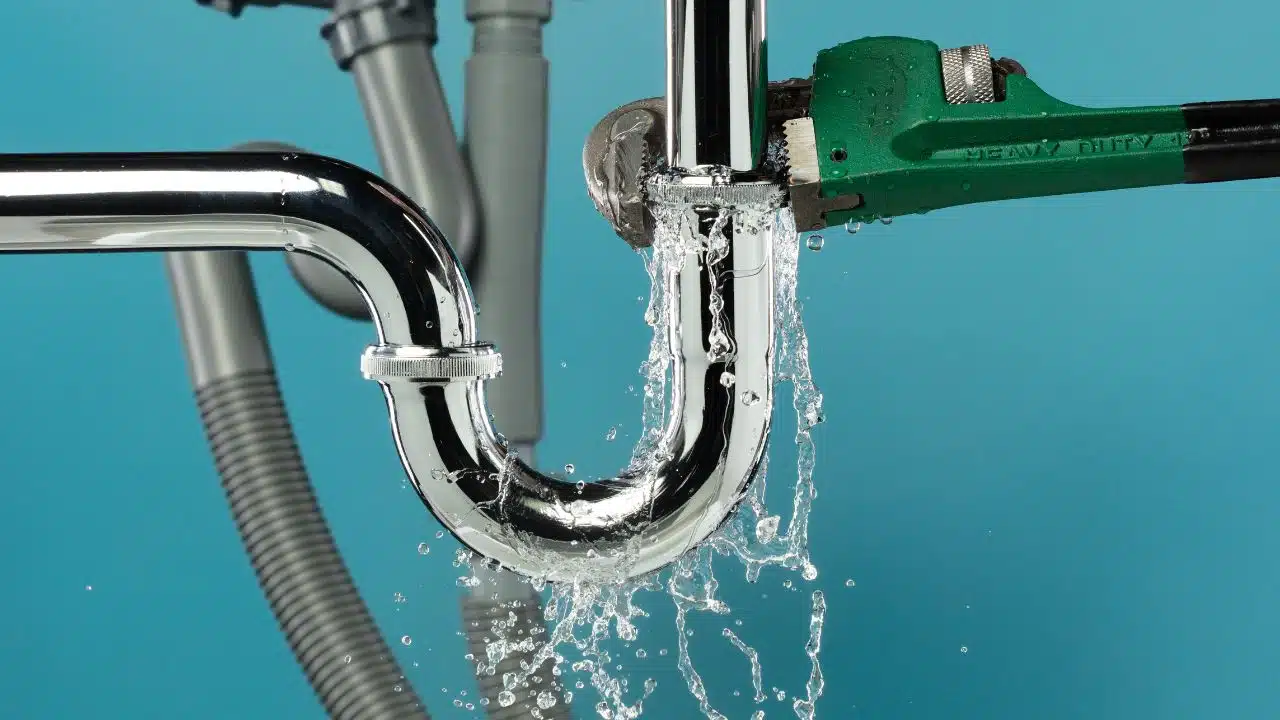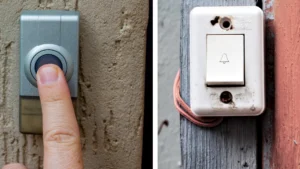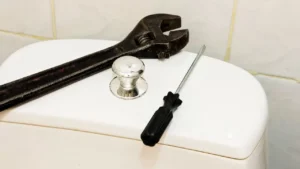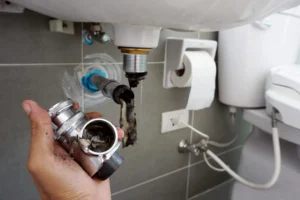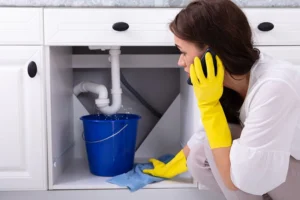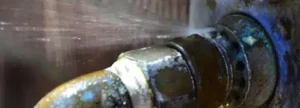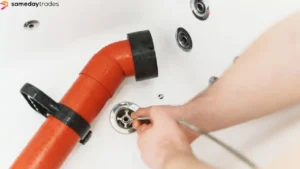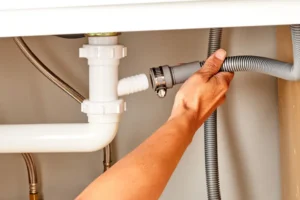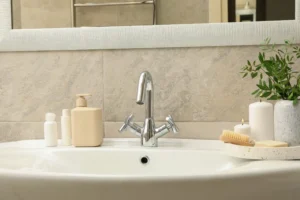Old homes in Adelaide have charm — high ceilings, big verandas, beautiful old bricks. But underneath all that character, the plumbing might be showing its age. And one of the most common problems? Pipe leaks.
A lot of older homes around suburbs like Glenelg, Norwood, and Unley still have the original pipes. Some of those pipes have been in place for 40, 50, even 70 years. Over time, those pipes wear out. They rust, crack, or shift. And when that happens, water starts leaking — sometimes slowly, sometimes suddenly.
You might not notice a leak right away. A small crack inside a wall or under the floor can keep dripping for weeks before you spot damp patches or smell something musty. That’s why knowing the signs — and why older homes are more likely to have issues — is so important.
What Makes Pipes Leak Over Time?
The biggest reason is simple: age. Pipes don’t last forever. In older homes, many were made from galvanised steel or cast iron. These materials are strong but not built to last for decades and decades.
Water moving through pipes causes wear from the inside. It can slowly break down the inner lining. At the same time, the outside of the pipe might be exposed to moisture or soil, speeding up rust and corrosion.
If a pipe joint wasn’t installed properly years ago, or it’s been stressed by movement in the house, it can start to leak as well. And with older homes, there’s often been some DIY patchwork along the way — quick fixes that don’t last forever.
Why Adelaide Homes Have It Worse
In Adelaide, soil movement is a big issue. The ground here has a lot of clay, and that clay expands when it rains and contracts when it dries. Over time, this causes small shifts in your home’s foundation. Pipes underground or in the slab can get pulled or bent slightly. That pressure can cause cracks or loosen joints.
Another factor? Trees. Adelaide has a lot of leafy, tree-lined streets — and older homes usually have mature trees nearby. Tree roots are always searching for moisture. If they find a tiny crack in a pipe, they’ll push their way in. Once inside, they keep growing and cause more damage.
Also, older homes often don’t have the modern plumbing standards we have now. Pipes were laid shallower. The materials weren’t as flexible. And in some cases, water pressure has increased over the years — which puts more strain on old pipes.
Signs That You Might Have a Leak
Some pipe leaks are obvious — water pooling under the sink, for example. But most leaks in older homes are hidden. They’re inside walls, under floors, or in the ceiling.
Here’s what to watch for:
-
Paint bubbling or peeling on walls or ceilings
-
Musty or damp smells, especially in unused rooms
-
Mould spots appearing without any clear reason
-
Water pressure that’s weaker than it used to be
-
Stains, patches, or soft areas on timber floors
-
Higher water bills without a change in usage
-
Dripping or running water sounds when everything is off
If you’re seeing one or more of these signs, it’s worth getting your plumbing inspected.
Common Reasons for Pipe Leaks in Old Homes
Let’s break it down further. These are the usual causes of pipe leaks in older homes:
1. Corroded Pipes
Old metal pipes slowly rust and corrode. Even if the outside looks fine, the inside may be thinning. A pinhole-sized leak can cause serious water damage over time.
2. Tree Root Damage
Tree roots grow into underground pipes through small gaps or cracks. Once inside, they keep expanding. Eventually, they block the pipe or break it completely.
3. Poor Repairs in the Past
Many older homes have had a few DIY plumbing jobs over the years. Sometimes pipes have been patched, sealed, or rerouted in ways that don’t last.
4. Foundation Shifts
As the ground under the home moves, so do the pipes. If they’re rigid and not built to flex, that movement can lead to cracks or loose joints.
5. Increased Water Pressure
Some old pipes just aren’t made to handle today’s water usage. Showers, dishwashers, irrigation systems — it all adds up. That extra pressure stresses already weak areas.
What You Can Do to Avoid Bigger Problems
Fixing a leaking pipe is one thing. But avoiding damage before it starts is always better. Here’s what you can do if you own an older home in Adelaide:
Schedule a Plumbing Inspection
A yearly check from plumbers in Adelaide can help catch small leaks or weak spots before they become expensive repairs.
Watch for Changes
Stay alert to changes in water pressure, smells, and water bills. These are early warning signs that something isn’t right.
Replace Old Sections During Renovations
If you’re redoing your kitchen, bathroom, or laundry, ask the plumber to check and update any visible old pipework. It’s cheaper to do it while everything’s already exposed.
Consider Installing Leak Detection
Smart systems can alert you if your home has a slow leak, even before you see the damage. They monitor water flow and shut off automatically if something seems off.
Keep Trees in Check
If you have large trees near your home, make sure their roots aren’t growing toward your sewer or stormwater pipes. A root barrier can help prevent intrusion.
Don’t Wait Until the Damage Is Done
The tricky thing about pipe leaks is that they can go unnoticed for a long time. You don’t always hear a drip or see a puddle. But behind the scenes, that water can be soaking into timber, plaster, and insulation — all of which are costly to repair.
Once water gets into the walls or flooring, it can also lead to mould, which isn’t just bad for your home — it’s bad for your health too.
Calling a local Adelaide plumber to take a look before the signs get worse can save you thousands in repair costs. And in most cases, finding a leak early means the fix is quicker, cheaper, and less invasive.
Final Thoughts
Adelaide has no shortage of beautiful old homes. They’ve stood the test of time — but the pipes behind the walls don’t last forever.
Pipe leaks are one of the most common problems in these homes. Whether it’s corrosion, roots, or shifting soil, the risk increases as homes get older.
But you don’t have to wait until something bursts. Regular inspections, early repairs, and smart upgrades can keep your plumbing running smoothly — and protect everything else in your home too.
If you think something’s off, trust your gut — or better yet, trust a qualified plumber to check it out.
FAQ
How long do pipes last in old homes?
Galvanised steel pipes last about 40–50 years. Copper pipes can last up to 70 years. If your home is older than that, the pipes are likely due for replacement.
What’s the most common sign of a hidden leak?
Rising water bills and musty smells are early warning signs. You might also notice bubbling paint or low water pressure.
Is replacing pipes in an old home expensive?
It depends on access and how much needs replacing. But catching leaks early usually costs less than fixing water damage.
Are pipe leaks covered by home insurance?
Sometimes. Sudden, accidental leaks might be covered, but slow or gradual leaks often aren’t. It depends on your policy.
Should I replace all my pipes at once?
Not necessarily. A plumber can check which sections are still good and which ones need replacing. It can be done in stages.
How long do pipes last in old homes?
Galvanised steel pipes last about 40–50 years. Copper pipes can last up to 70 years. If your home is older than that, the pipes are likely due for replacement.
What’s the most common sign of a hidden leak?
Rising water bills and musty smells are early warning signs. You might also notice bubbling paint or low water pressure.
Is replacing pipes in an old home expensive?
It depends on access and how much needs replacing. But catching leaks early usually costs less than fixing water damage.
Are pipe leaks covered by home insurance?
Sometimes. Sudden, accidental leaks might be covered, but slow or gradual leaks often aren’t. It depends on your policy.
Should I replace all my pipes at once?
Not necessarily. A plumber can check which sections are still good and which ones need replacing. It can be done in stages.

